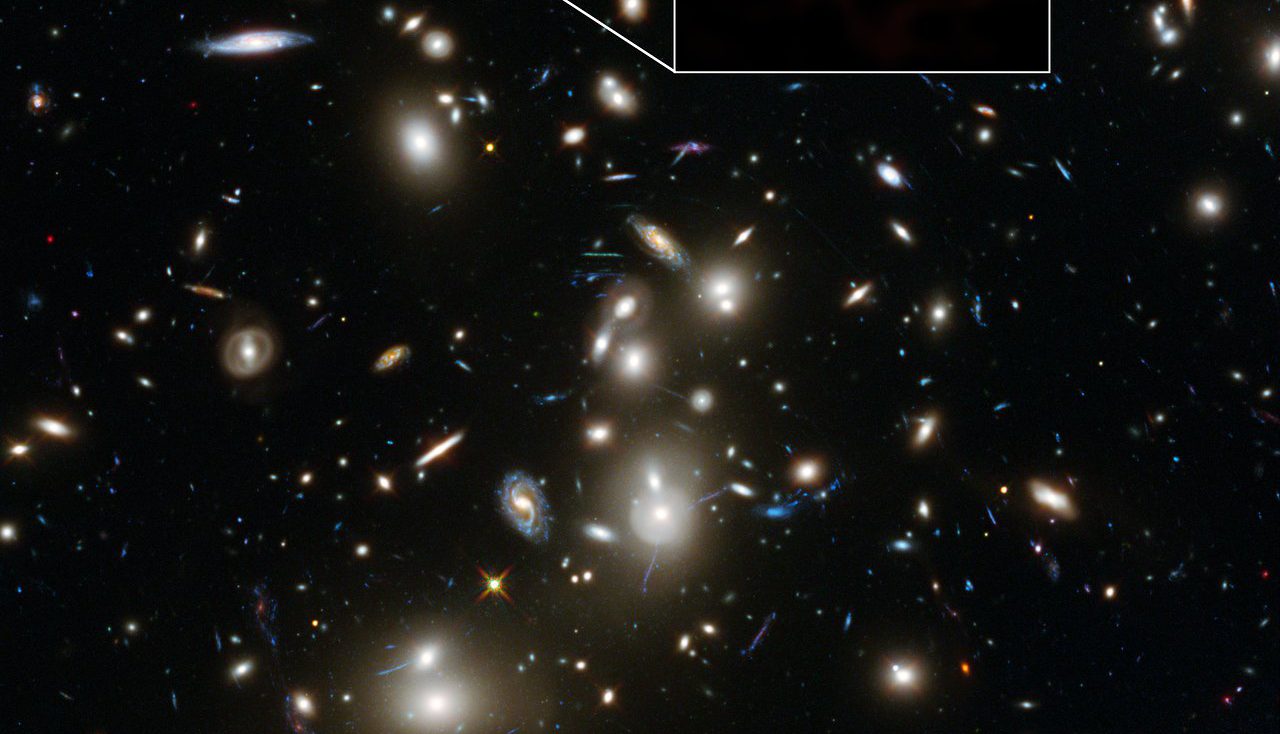The youngest and most remote galaxy ever seen by ALMA
The Atacama Large Millimeter/submillimeter Array (ALMA) at Chile, was used by an international team of astronomers, led by Nicolas Laporte of University College London, to observe A2744_YD4, the youngest and most remote galaxy ever seen by ALMA. This galaxy was observed shortly after its formation, when the Universe was only four percent (4%) of its present age (~13.7billion years), and is the most distant galaxy in which dust has been detected.
The team of astronomers studyied the observational data and found that galaxy A2744_YD4 contained an abundance of interstellar dust — dust formed by the deaths of an earlier generation of stars.
Dr. Nicolas Laporte commented: “Not only is A2744_YD4 the most distant galaxy yet observed by ALMA, but the detection of so much dust indicates early supernovae must have already polluted this galaxy.”
The enormous distnace to A2744_YD4, at a redshift of z=8.38 or when the Universe was only ~600 million years old, was confirmed by follow-up observations using the X-shooter instrument on ESO’s Very Large Telescope, located at an altitute of 2’635m atCerro Paranal, Chile.
The dusty galaxy A2744_YD4 lies behind a massive galaxy cluster called Abell 2744 (3.5 billion light-years away or at redshift z=0.308), that is thought to be the result of four smaller galaxy clusters colliding. Abell 2744 acted like a giant cosmic “telescope” to magnify the more distant A2744_YD4 by about 1.8 times, a result of a phenomenon called gravitational lensing.
Astronomers estimated that A2744_YD4 contained an amount of dust equivalent to 6 million times the mass of our Sun, while the galaxy’s total stellar mass (the mass of all its stars) is estimated around to 2 billion times the mass of our Sun. They also measured the star formation rate of A2744_YD4 and found that stars are forming at a rate of 20 solar masses per year (for our Milky Way is just one solar mass per year)
Prof. Richard Ellis (ESO and University College London) a co-author of the study noted: “This rate is not unusual for such a distant galaxy, but it does shed light on how quickly the dust in A2744_YD4 formed. Remarkably, the required time is only about 200 million years — so we are witnessing this galaxy shortly after its formation.”
And Dr. Laporte concludes: “Further measurements of this kind offer the exciting prospect of tracing early star formation and the creation of the heavier chemical elements even further back into the early Universe.”

Credit: ALMA (ESO/NAOJ/NRAO), NASA, ESA, ESO and D. Coe (STScI)/J. Merten (Heidelberg/Bologna)
Credits (text & video): European Southern Observatory

